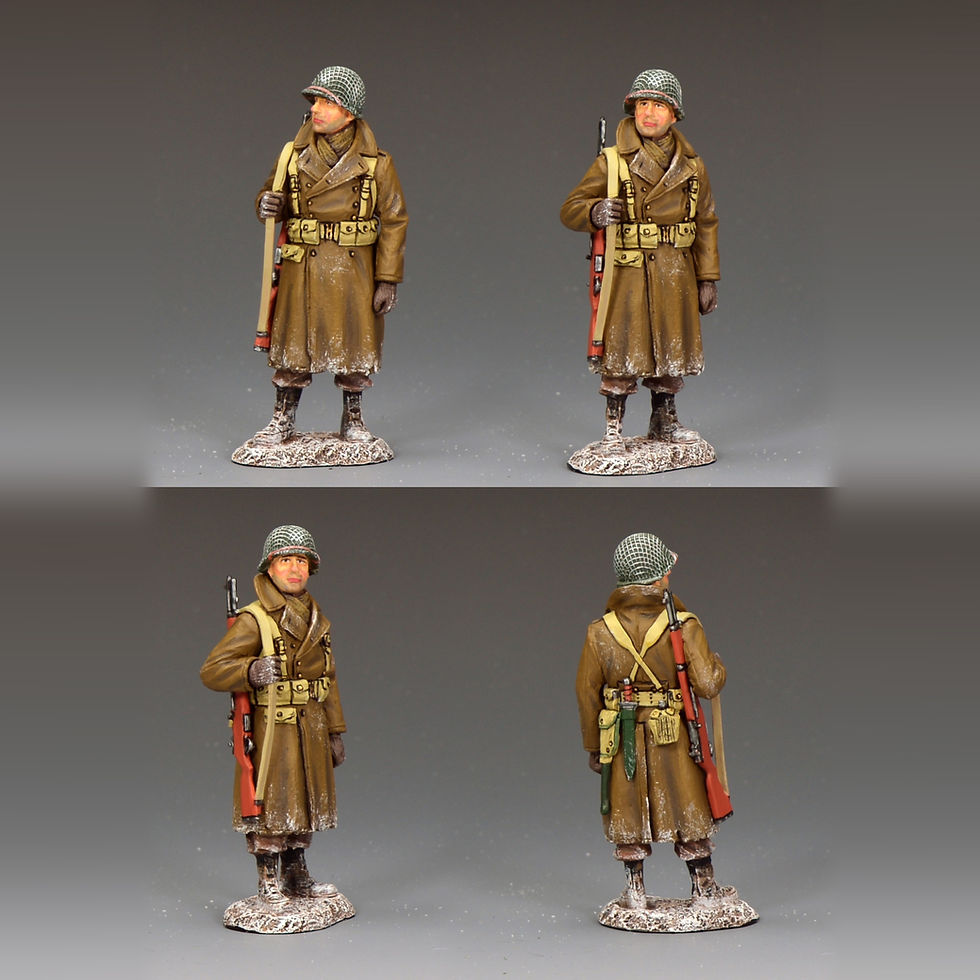$100 US Gift Certificate
$298.00
DISCLAIMER: Please note that Toy Soldiers Club is not supporting nazi ideologies nor wants to promote them. Those historical figures are available here because we need them to explain all the horrors mankind faced during World War Two. Without showing them, the sacrifices and efforts made by a whole generation of people living in allied countries would just make no sense. Plus, we hope that using those figures in a proper context could serve as a tool to teach the future generations the danger of such ideologies. Like Winston Churchill once said when paraphrasing Santayana, “Those that fail to learn from history are doomed to repeat it.”
Quantity
Details
Italy... the Forgotten Front!
While most World War Two enthusiasts focus on either the Normandy Campaign or the Eastern Front, the Italian Theatre was no less important in 1944 to the outcome of the war. Following their victory in North Africa, the Allies launched a campaign to weaken the Axis by knocking Italy out of the war. Allied planners originally envisioned a relatively easy operation to carve out the "soft underbelly" of Europe. Instead, they encountered a "tough old gut" filled with battle-hardened German troops, turning the theatre into a grueling campaign that stretched the length of the Italian peninsula. Here, Allied offensives were repeatedly rebuffed in brutal fighting, nowhere more so than at the Allied landings at Anzio and during the multiple battles for Monte Cassino and the Gustav Line. Fighting in Italy continued until the very end of the war and proved to be the bloodiest campaign on the Western Front, with combined Allied and German infantry casualties exceeding 300,000.
John Jenkins Designs' newest releases focus on this often-overlooked area of World War Two, with a matched pair of assault guns representing a StuG III Ausf. G and a StuH 42 Sturmhaubitze (Assault Howitzer) of StuG Brigade 242.
StuG Abteilung 242 was originally formed in November 1942 and was intended for deployment in North Africa, where Generaloberst Erwin Rommel was eager to add its firepower to Panzerarmee Afrika. However, the Desert Fox only partially got his wish: only the 1. Batterie was sent to Africa, where it was attached to the 10. Panzer-Division and fought until the German surrender in Tunisia.
The other two StuG batteries were diverted at the last minute to the Eastern Front following the collapse at Stalingrad, where they suffered heavy casualties fighting brutal delaying actions. Pulled from Russia in early 1943, the 2nd and 3rd Batteries were reorganized, re-equipped, and then sent to Sardinia, Italy.
In Sardinia, StuG Abteilung 242 was attached to the 90. leichte "Afrika" Division and formed a German rearguard until the island was abandoned in September 1943. The battalion was then sent to Corsica, where it again covered the German retreat to mainland Italy. At the beginning of 1944, StuG Abteilung 242 was deployed to the southern Italian sector, where the unit saw action in all the major engagements of the four battles for Monte Cassino, which raged from 17 January to 18 May 1944. The unit served as a mobile "fire brigade" for the sector, with its assault gun batteries dispatched to the fiercest points of combat, helping to keep the vitally important Monte Cassino in German hands, which served as a linchpin for Field Marshal Kesselring's defense of the Gustav Line. During this period, StuG Abteilung 242 was subsequently attached to the 94. Infanterie-Division, 44. Infanterie-Division "Hoch und Deutschmeister", the "Hermann Göring" Division, and the 1. Fallschirmjäger Division. Additionally, on 14 February 1944 the unit was officially redesignated as StuG Brigade 242. StuG Brigade 242's most famous action occurred while attached to the 1. Fallschirmjäger Division. Its StuG III assault guns directly supported the German paratroopers as they fought amidst the rubble of Cassino and the ruins of the historic Monte Cassino Abbey, which had been destroyed by Allied bombers in one of the most controversial decisions of the war. One particular StuG III from the brigade proved especially troublesome for the Allies. It was positioned in the main hall of the destroyed Excelsior Hotel, where it sheltered from Allied bombing and artillery strikes, only to emerge when needed to repel Allied tanks. Famous video footage of the fighting involving StuG Brigade 242 can be found in German Wochenschau newsreel episodes.
Scale: 1/30
Material: Resin and pewter alloy
Released Date: October 2025
More Information
| Year | Mid 20th Century |




































